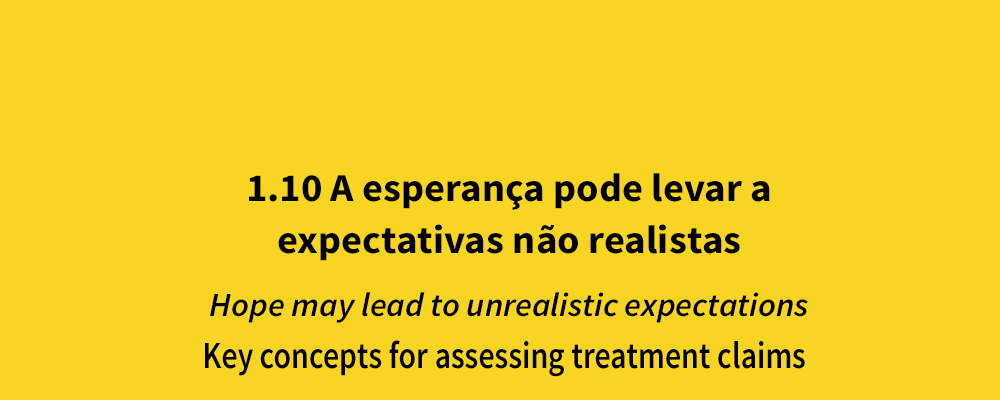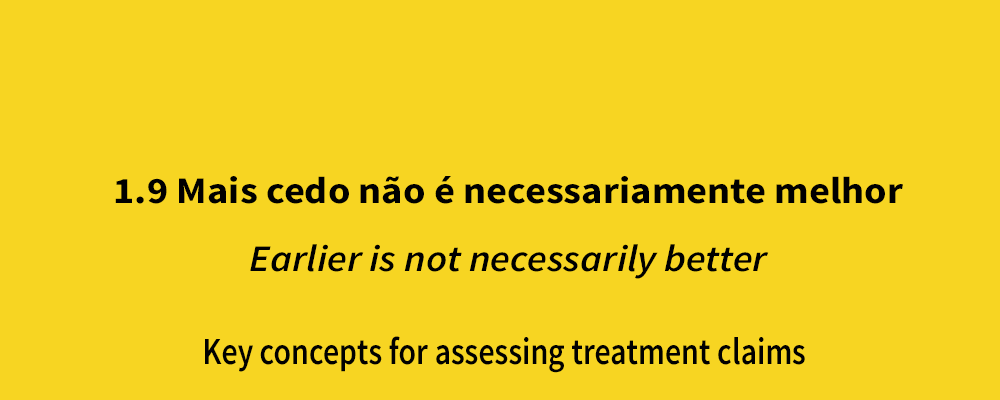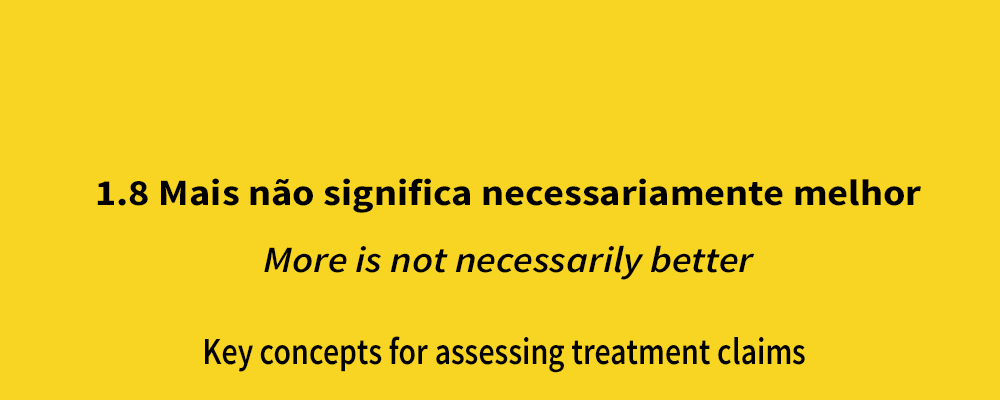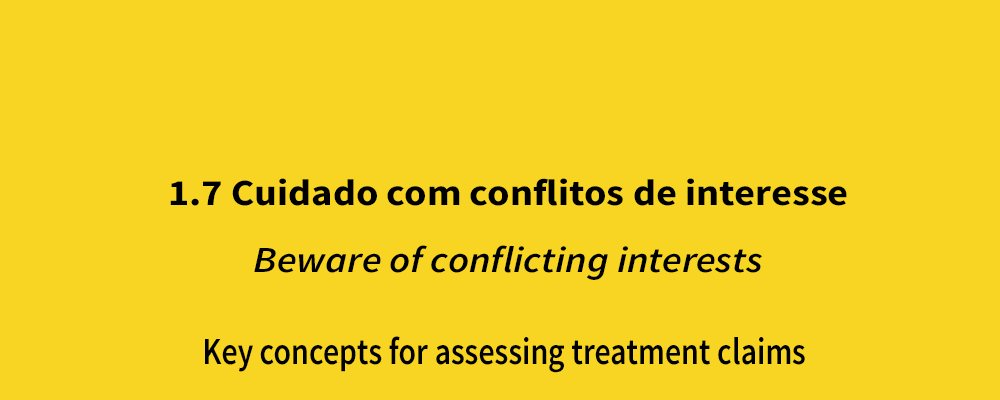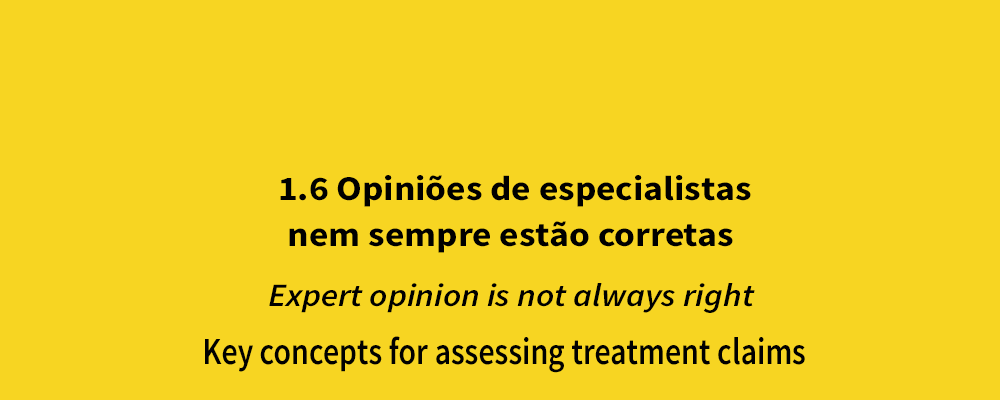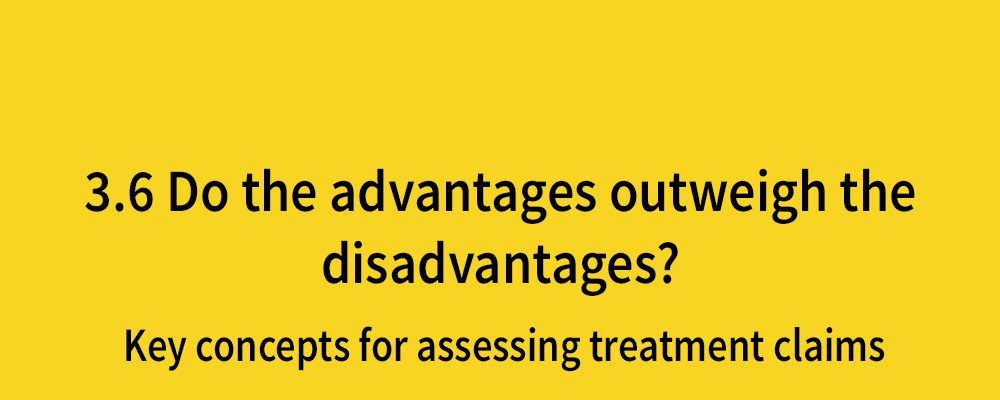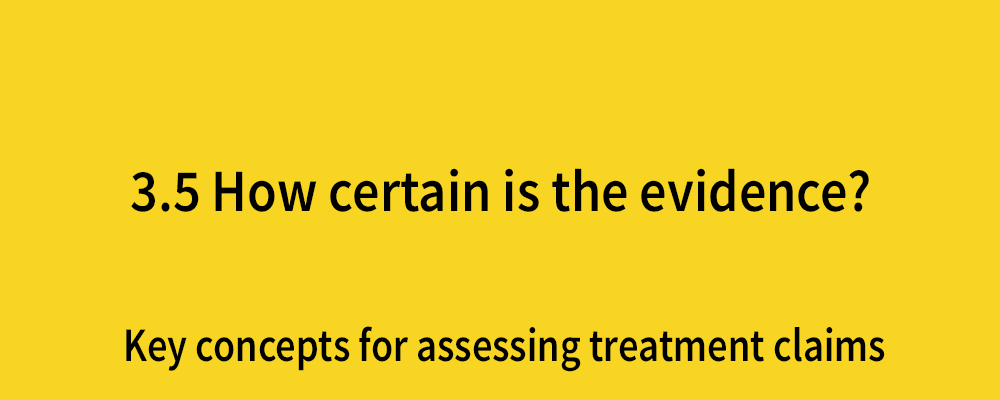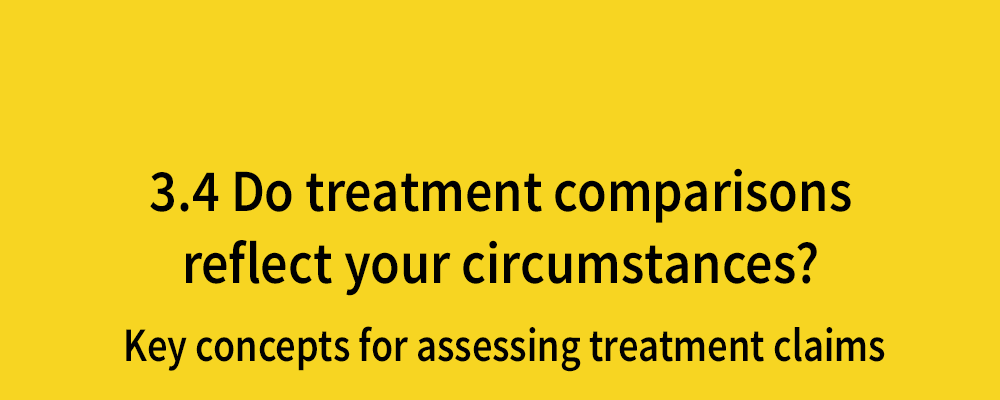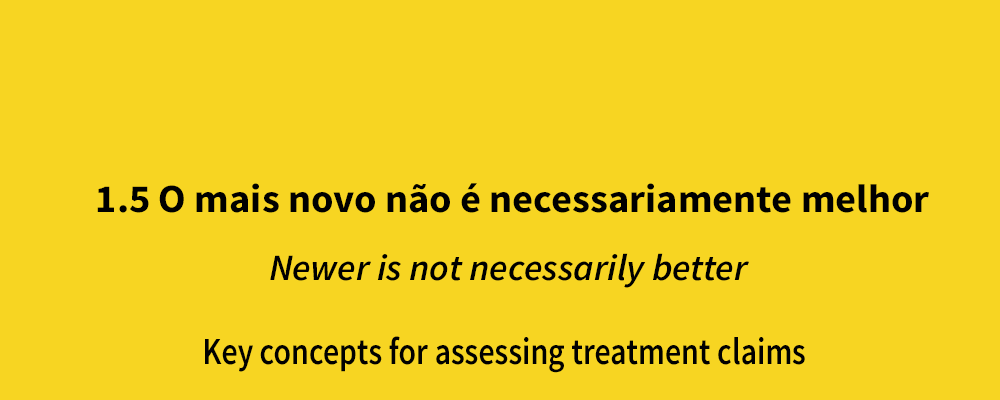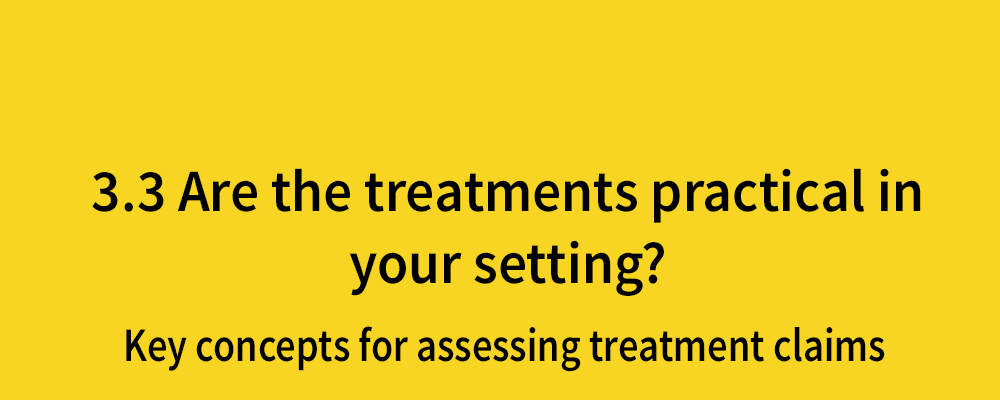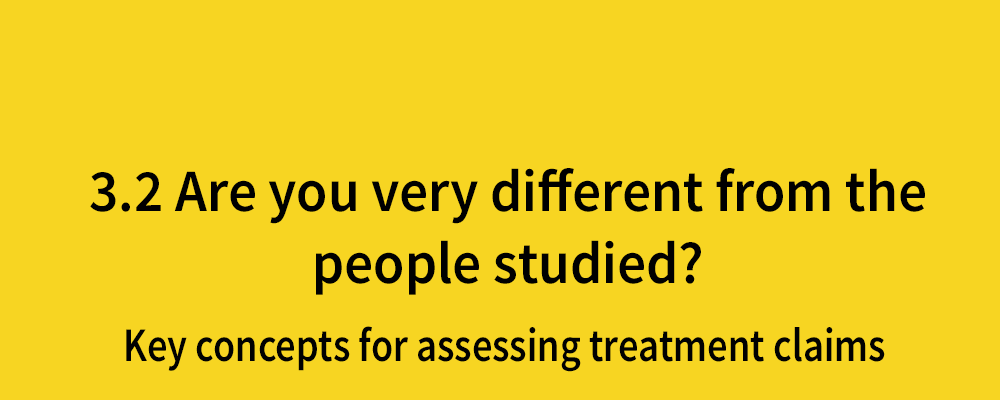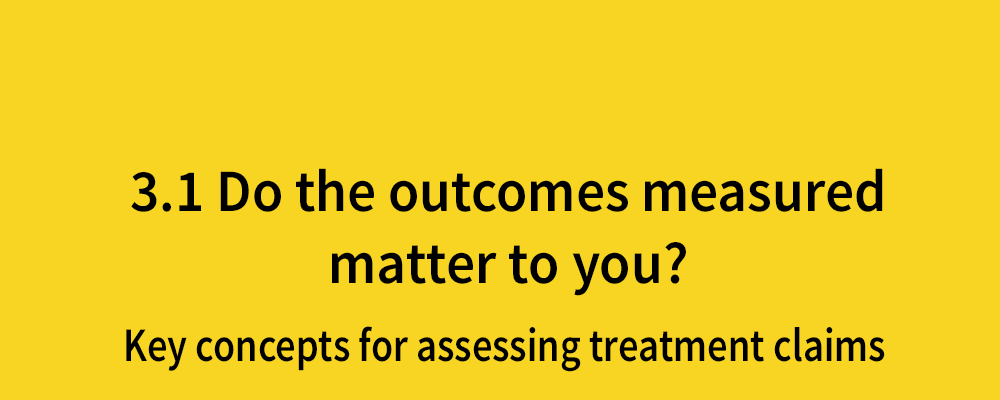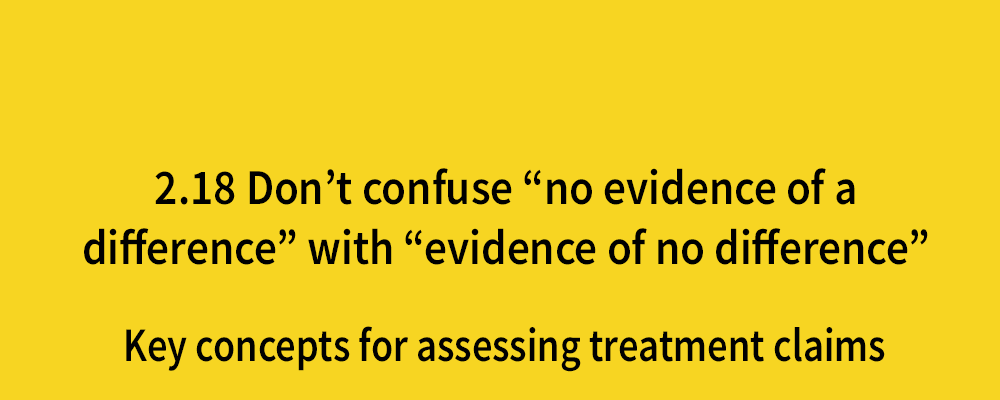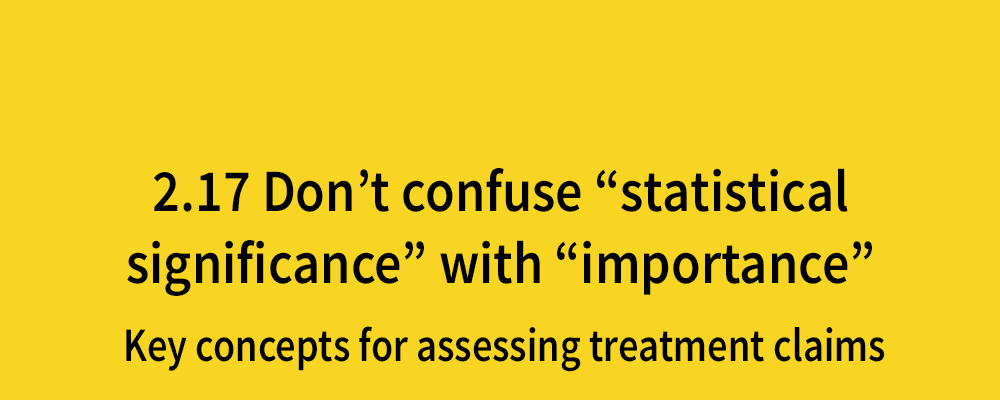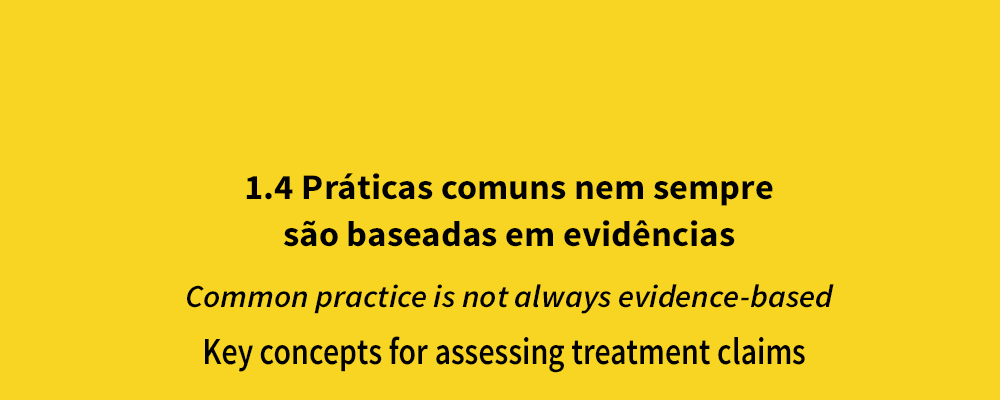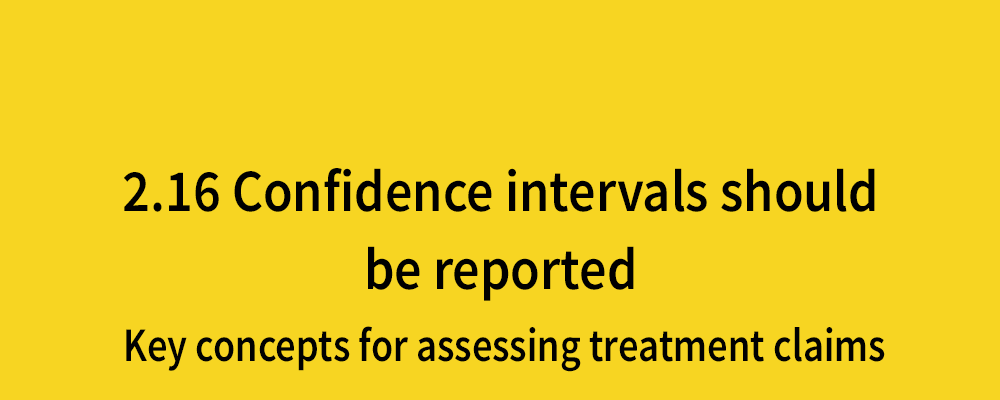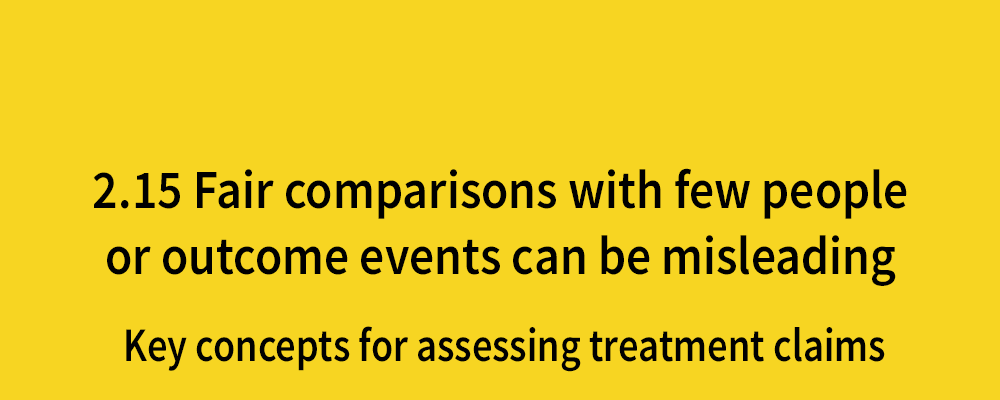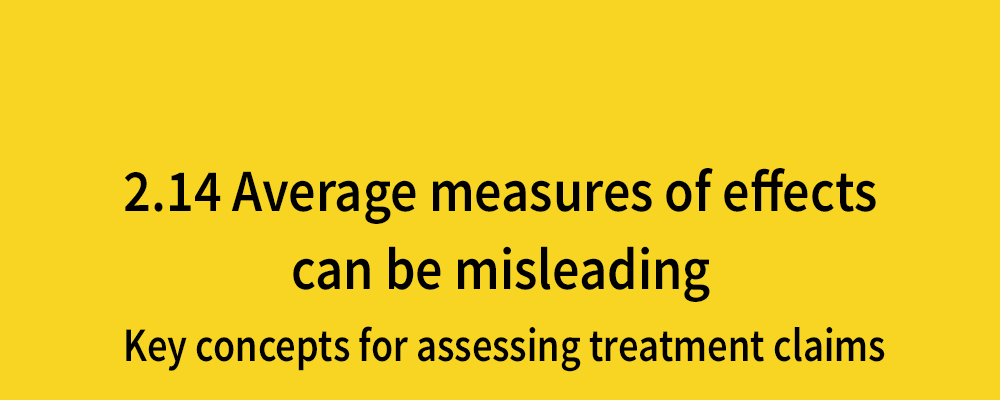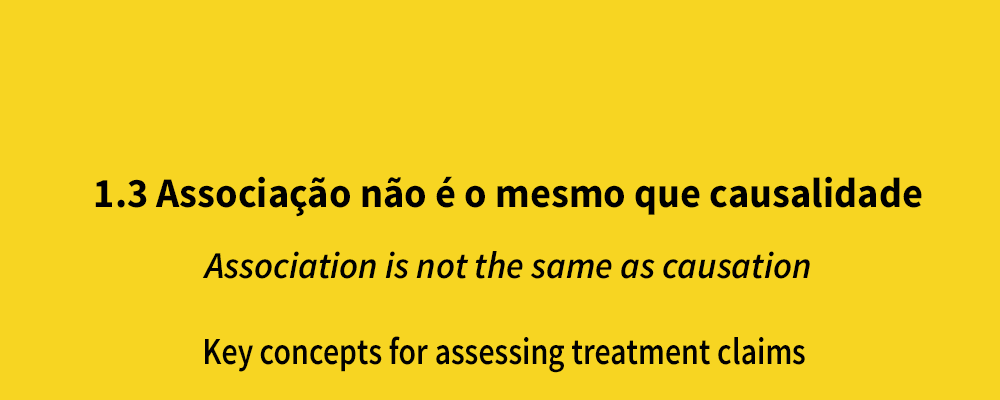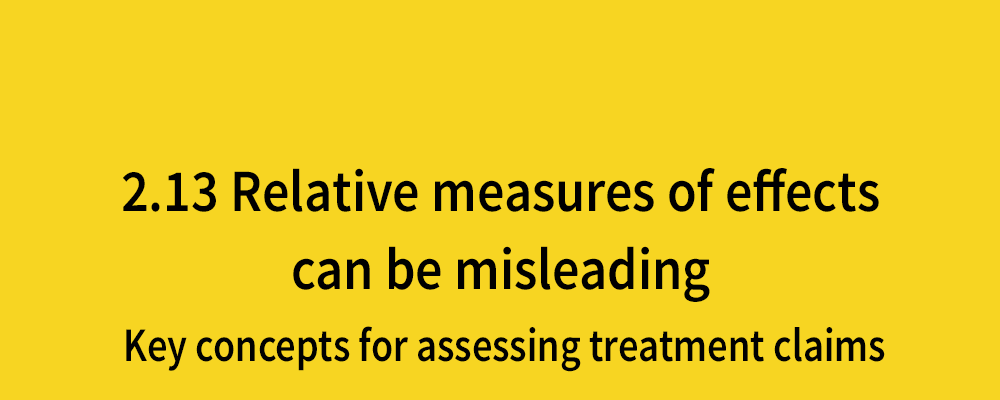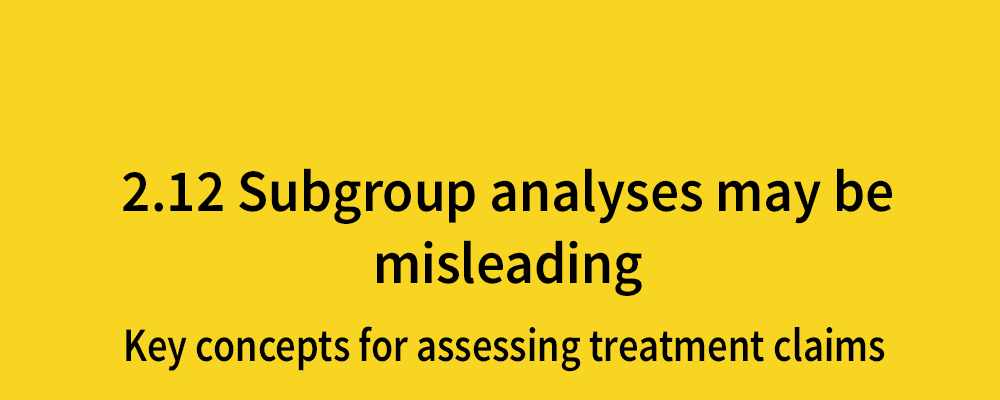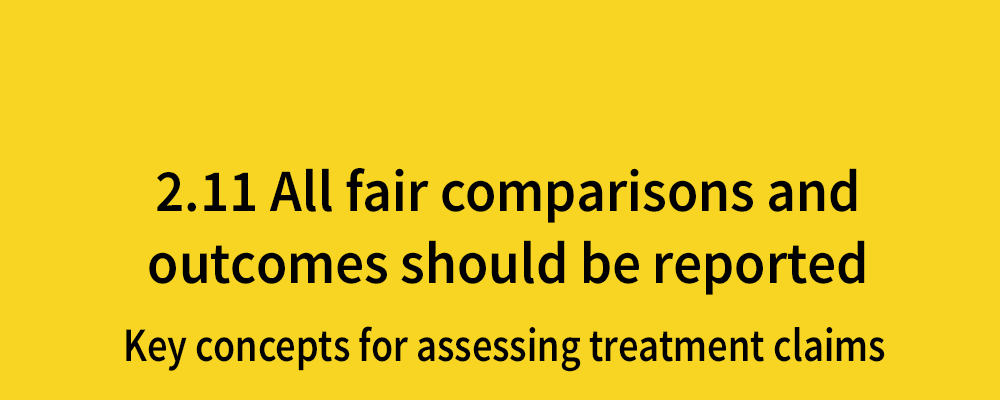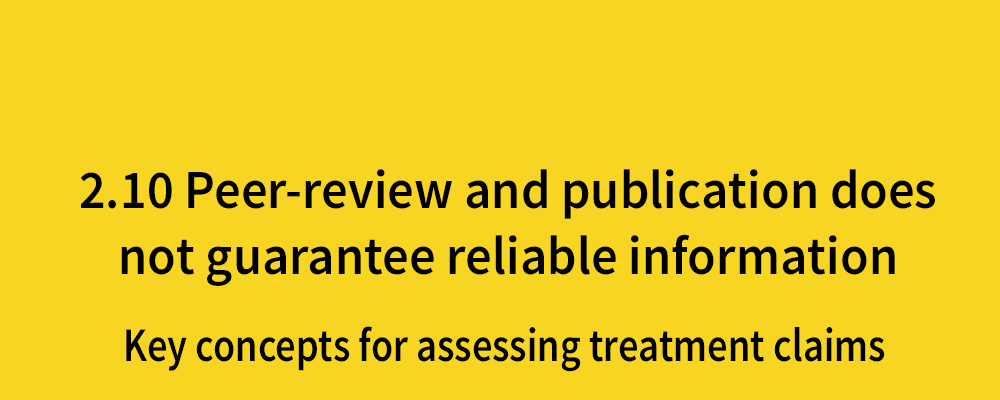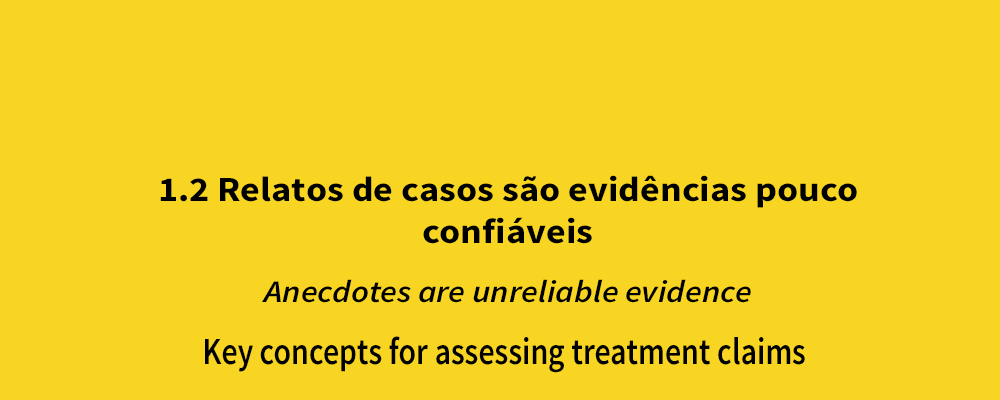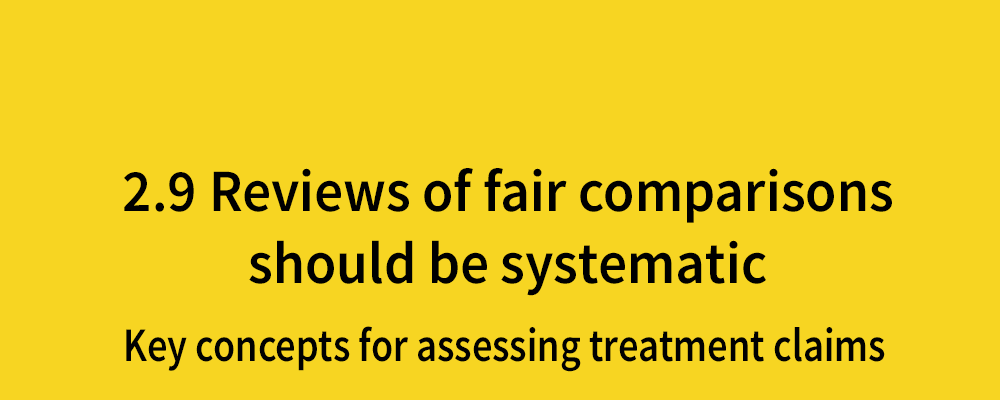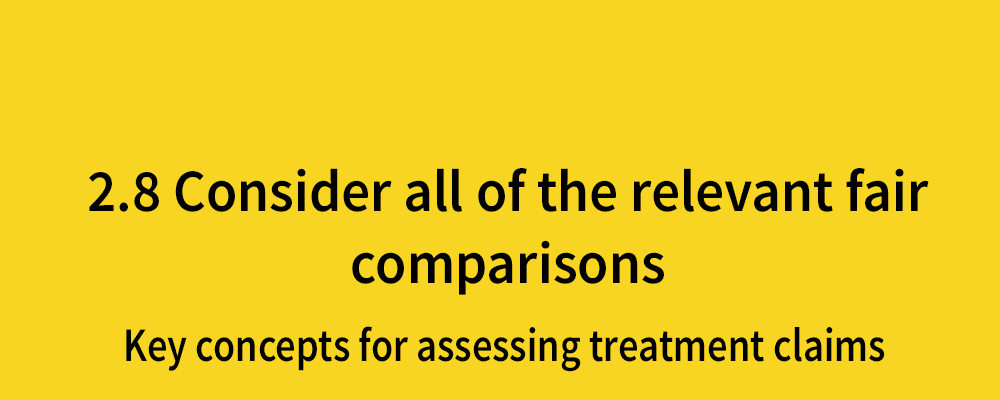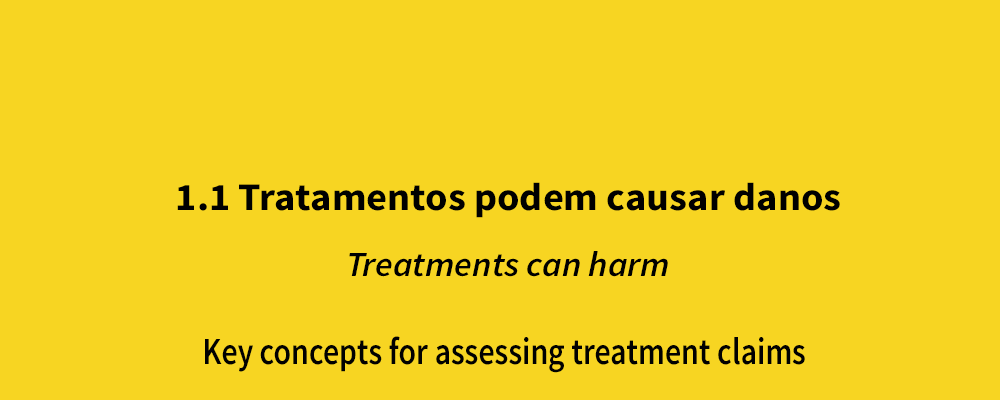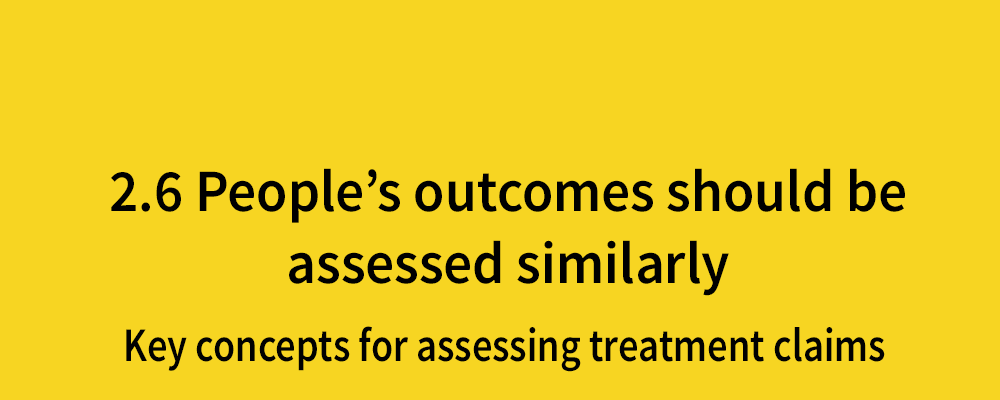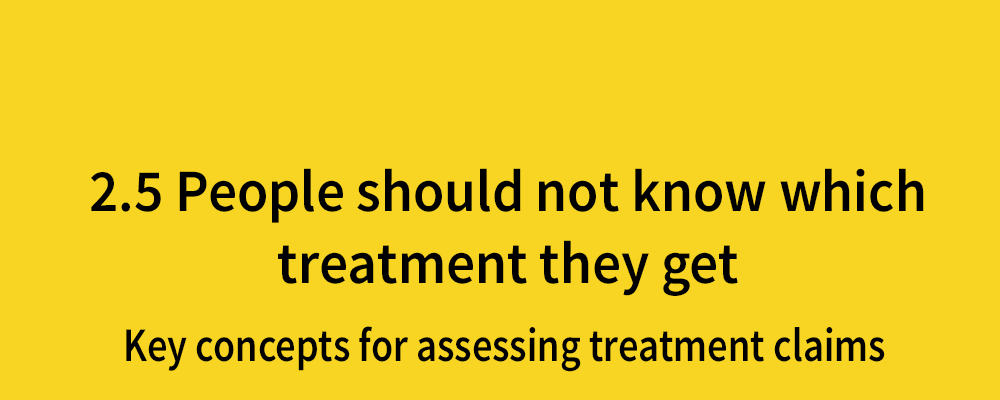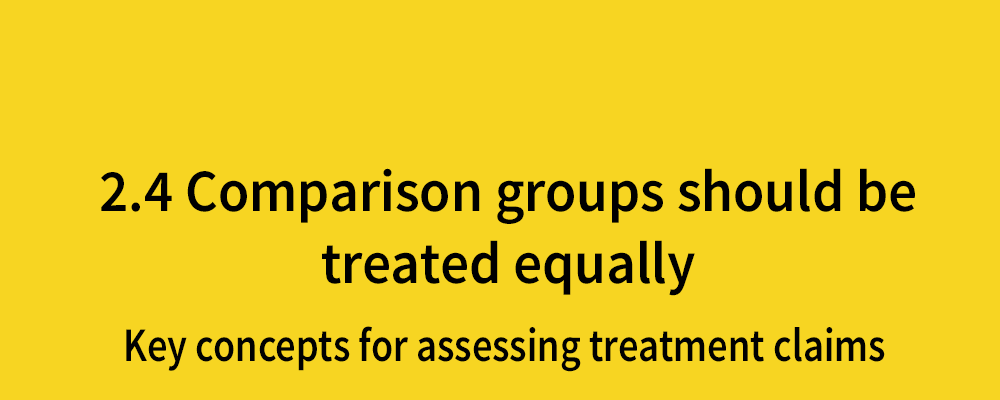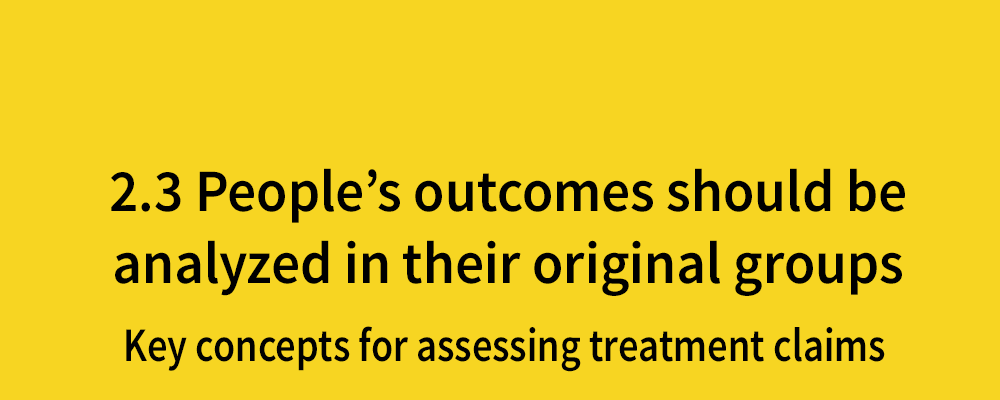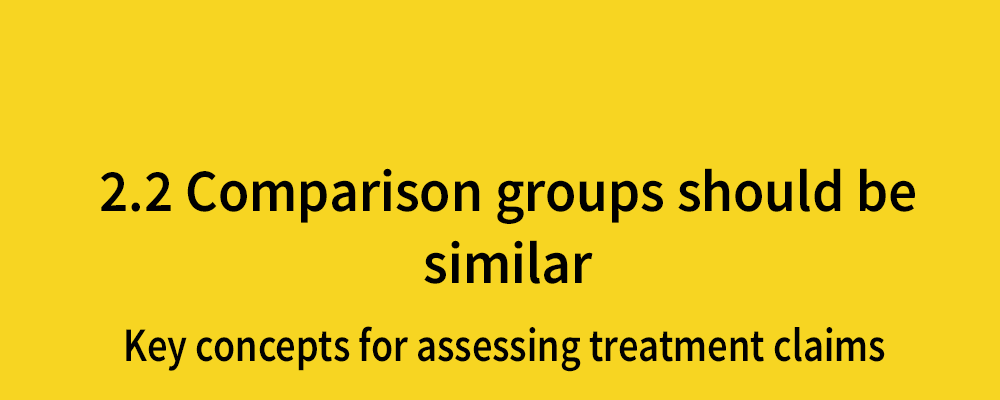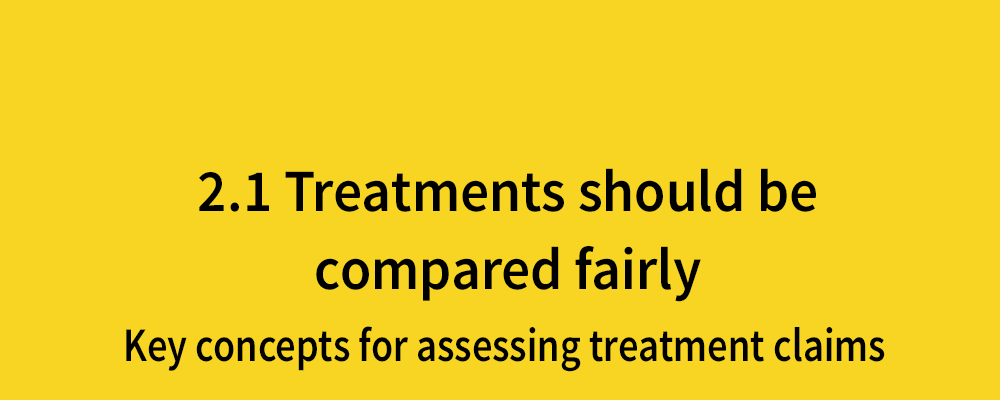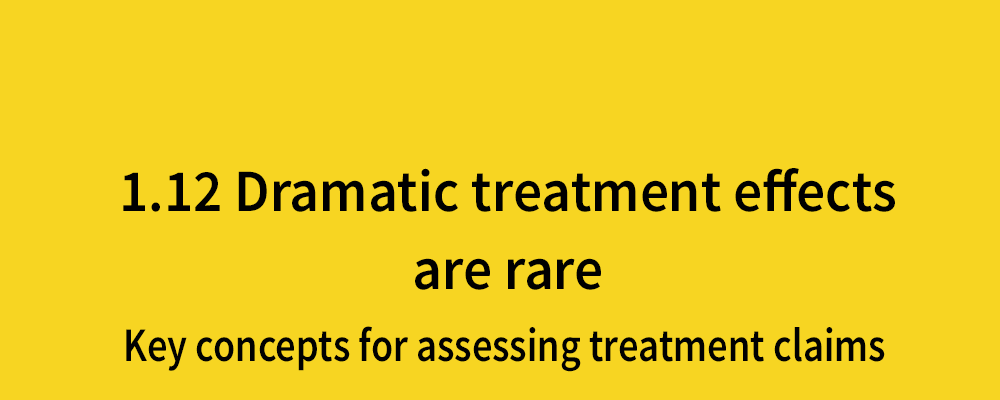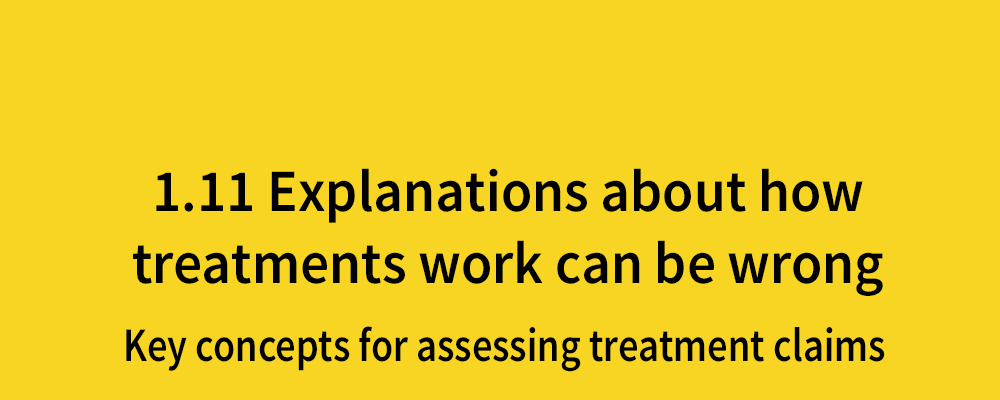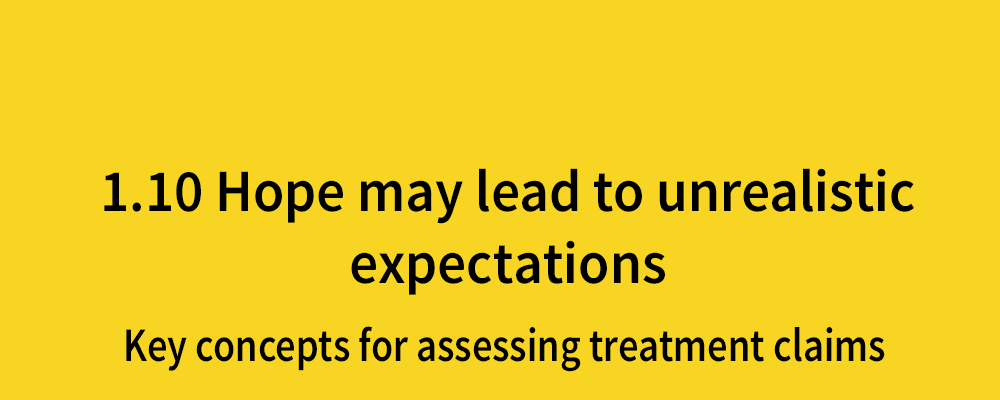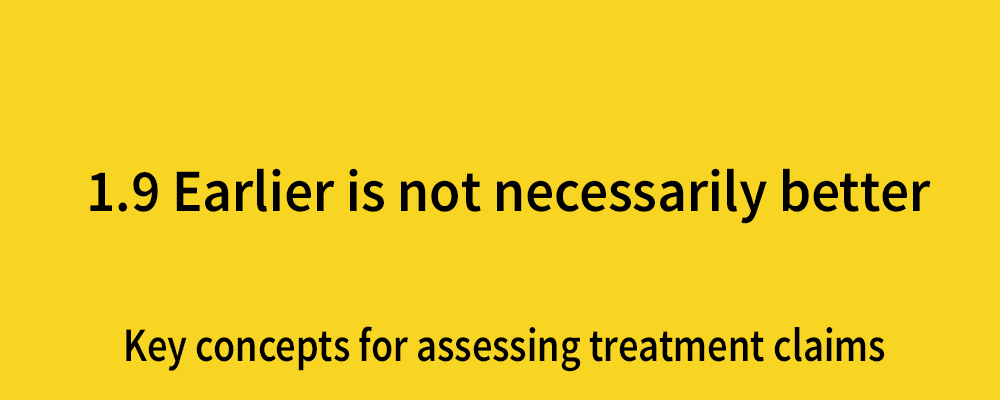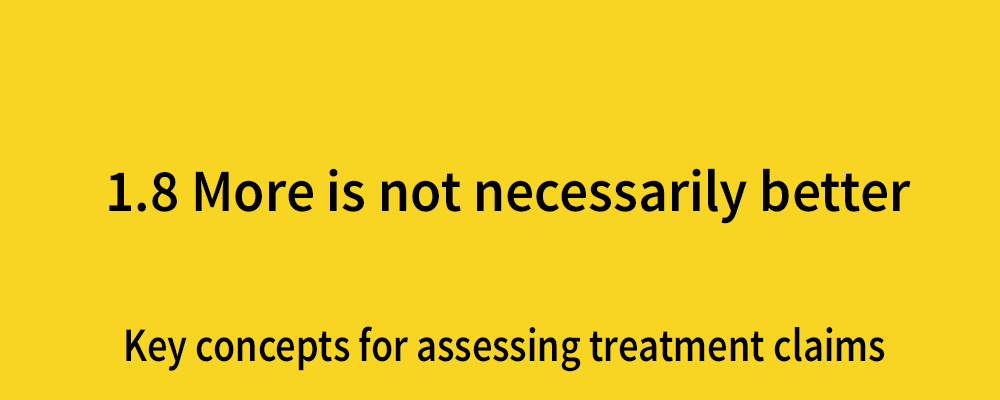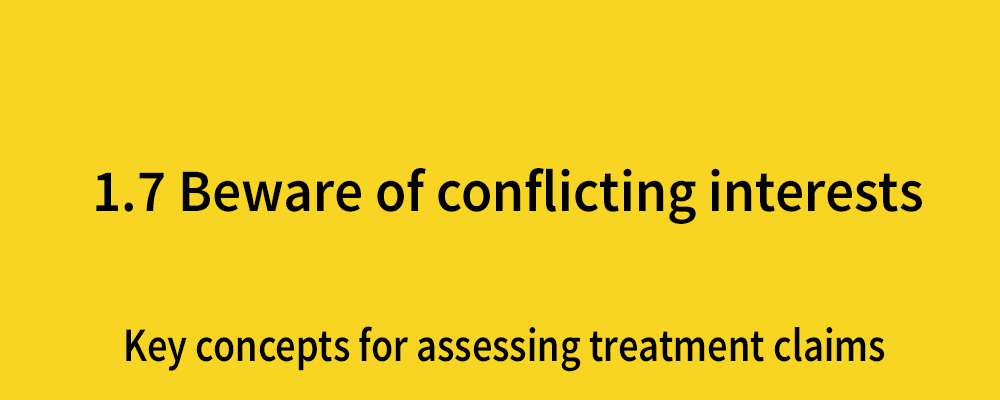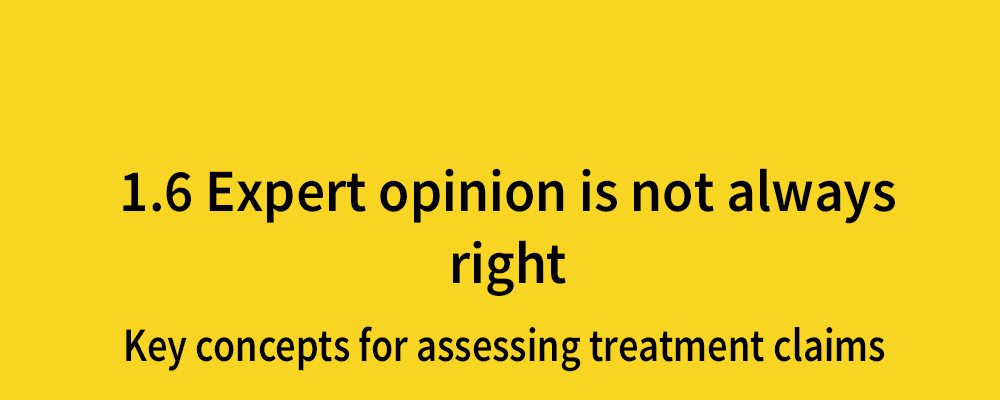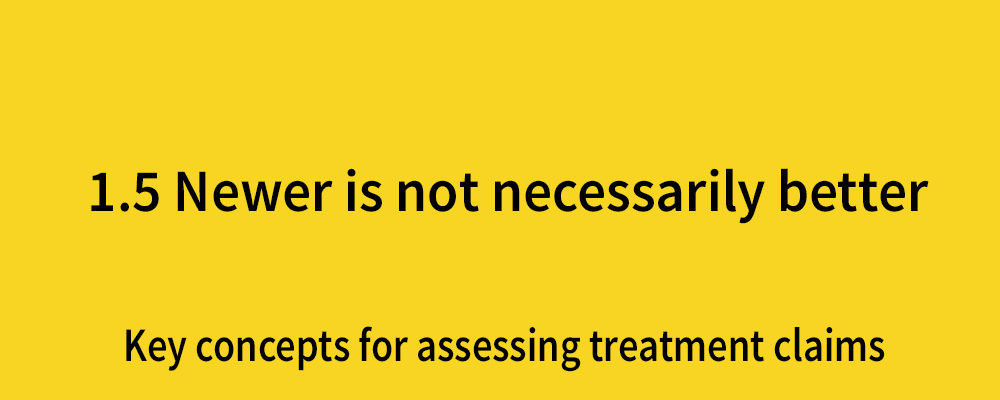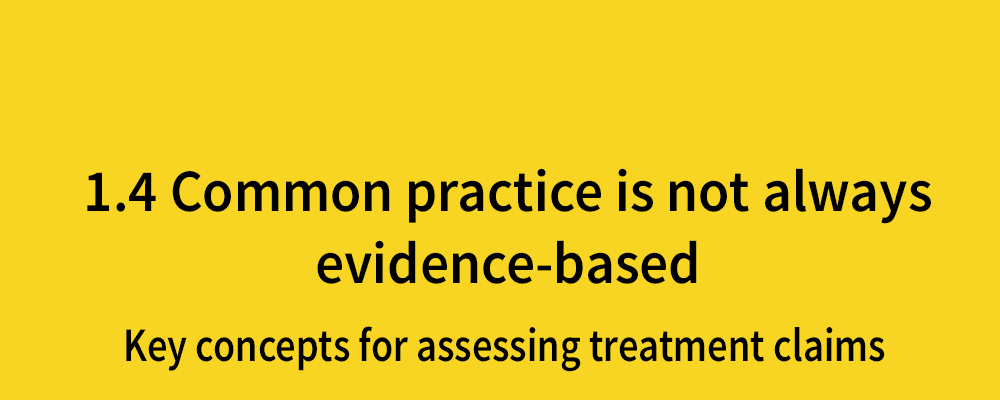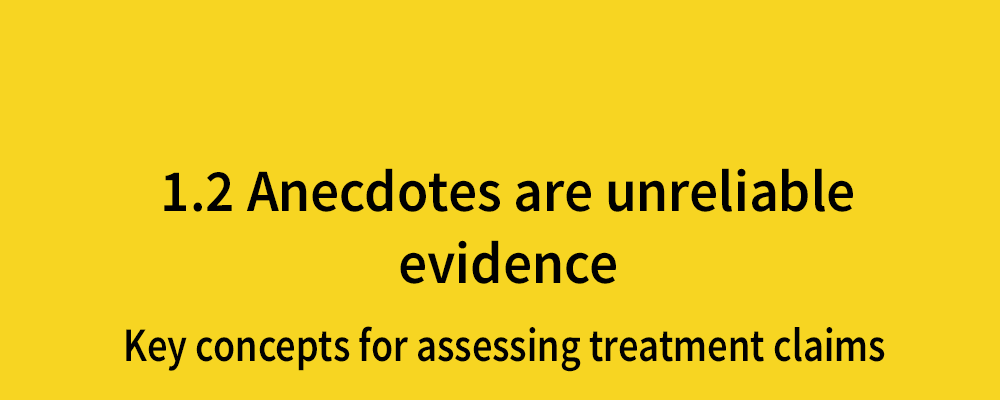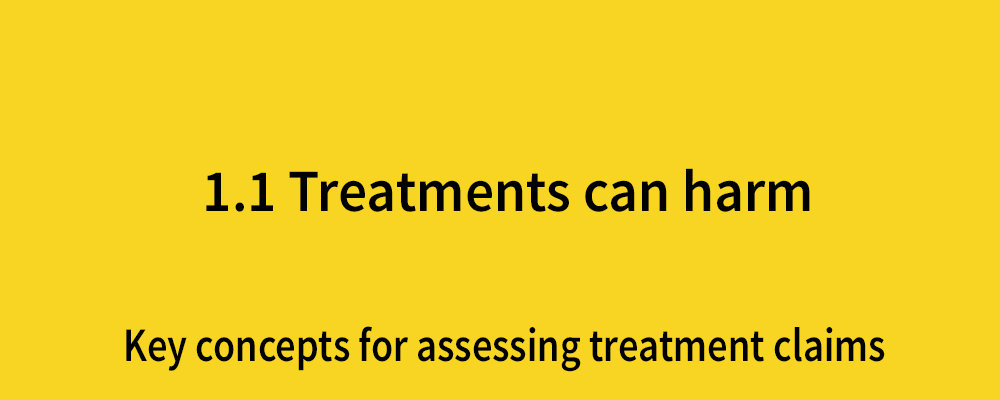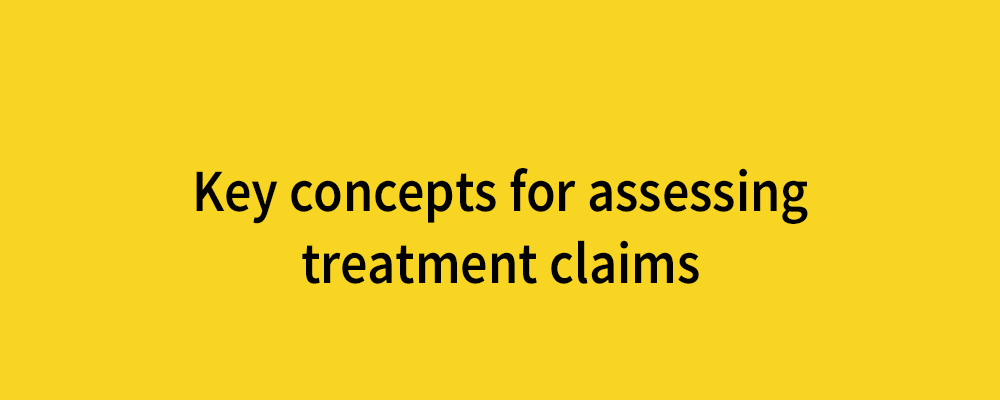Tutorials and Fundamentals
This is a Portuguese translation of the tenth in a series of 36 blogs explaining 36 Key Concepts we need to be able to understand to think critically about treatment claims. With thanks to Vinicius Fiuza and Cochrane Brazil for the translation.
Hope can be a good thing, but sometimes people in need or desperation hope that treatments will work and assume they cannot do any harm. Similarly, fear can lead people to use treatments that may not work and can cause harm. As a result, they may waste time and money on treatments that have never been shown to be useful, or may actually cause harm.
Tutorials and Fundamentals
This is a Portuguese translation of the ninth in a series of 36 blogs explaining 36 Key Concepts we need to be able to understand to think critically about treatment claims. With thanks to Ney Duarte Neto and Cochrane Brazil for the translation.
This blog explains that people often assume that early detection of disease leads to better outcomes. However screening tests can be inaccurate (e.g. misclassifying people who do not have disease as having disease). Screening can also cause harm by labelling people as being sick when they are not and because of side effects of the tests and treatments.
Tutorials and Fundamentals
This is a Portuguese translation of the eighth in a series of 36 blogs explaining 36 Key Concepts we need to be able to understand to think critically about treatment claims. With thanks to Marília Ferreira and Cochrane Brazil for the translation.
This blog explains that increasing the dose or amount of a treatment (e.g. how many vitamin pills you take) often increases harms without increasing beneficial effects. If a treatment is believed to be beneficial, we should not assume that more of it is better.
Tutorials and Fundamentals
Informed Health Choices (IHC) ‘Key Concepts’ videos in German (3.1 – 3.6). These set of key concepts help people to make informed choices about treatments
Tutorials and Fundamentals
Informed Health Choices (IHC) ‘Key Concepts’ videos in German (2.1 – 2.18). These set of key concepts help people understand whether comparisons of treatments are fair and reliable
Tutorials and Fundamentals
Informed Health Choices (IHC) ‘Key Concepts’ videos in German (concepts 1.1 – 1.12). These set of key concepts help people to recognise an unreliable basis for treatment claims.
Tutorials and Fundamentals
We are delighted to introduce the German translations of the Informed Health Choices (IHC) ‘Key Concepts’ videos. Thank you to 4th year Physiotherapy students from the University of hochschule 21 and Cordula Braun.
Tutorials and Fundamentals
This is a Portuguese translation of the seventh in a series of 36 blogs explaining 36 Key Concepts we need to be able to understand to think critically about treatment claims. With thanks to Lucas Mello Netto and Cochrane Brazil for the translation.
This blog discusses how people with an interest in promoting a treatment (in addition to wanting to help people), such as making money, may promote treatments by exaggerating benefits and ignoring potential harmful effects. Conversely, people may be opposed to a treatment for a range of reasons, such as cultural practices.
Tutorials and Fundamentals
This is a Portuguese translation of the sixth in a series of 36 blogs explaining 36 Key Concepts we need to be able to understand to think critically about treatment claims. With thanks to Leonardo Guimarães Fernandes and Cochrane Brazil for the translation.
This blog explains that doctors, researchers, patient organisations and other authorities often disagree about the effects of treatments. It explains why we should not rely on the opinions of experts or other authorities about the effects of treatments, unless they clearly base their opinions on the findings of systematic reviews of fair comparisons of treatments.
Tutorials and Fundamentals
This is the final blog in a series of 36 blogs explaining 36 key concepts we need to be able to understand to think critically about treatment claims.
Decisions about whether or not to use a treatment should be informed by the balance between the potential benefits and the potential harms, costs and other advantages and disadvantages of the treatment.
Tutorials and Fundamentals
This is the thirty-fifth blog in a series of 36 blogs explaining 36 key concepts we need to be able to understand to think critically about treatment claims.
The certainty of the evidence (the extent to which the research provides a good indication of the likely effects of treatments) can affect the treatment decisions people make. For example, someone might decide not to use or to pay for a treatment if the certainty of the evidence is low or very low.
Tutorials and Fundamentals
This is the thirty-fourth blog in a series of 36 blogs explaining 36 key concepts we need to be able to understand to think critically about treatment claims.
Comparisons designed to evaluate whether a treatment can work under ideal circumstances may not reflect what you can expect under usual circumstances.
Tutorials and Fundamentals
This is a Portuguese translation of the fifth in a series of 36 blogs explaining 36 Key Concepts we need to be able to understand to think critically about treatment claims. With thanks to Henrique Pinho Volker and Cochrane Brazil for the translation.
This blog explains that new treatments are often assumed to be better simply because they are new or because they are more expensive. However, they are only very slightly likely to be better than other available treatments.
Tutorials and Fundamentals
This is the thirty-third blog in a series of 36 blogs explaining 36 key concepts we need to be able to understand to think critically about treatment claims.
Are the treatments practical in your setting? Be aware that treatments available to you may be sufficiently different from those in the research studies that the results may not apply to you.
Tutorials and Fundamentals
This is the thirty-second blog in a series of 36 blogs explaining 36 key concepts we need to be able to understand to think critically about treatment claims.
Are you very different from the people studied? Systematic reviews of studies that only include animals or a selected minority of people may not provide results that are relevant to most people. This may be misleading.
Tutorials and Fundamentals
This is the thirty-first blog in a series of 36 blogs explaining 36 key concepts we need to be able to understand to think critically about treatment claims.
A systematic review of fair comparisons of treatments should measure outcomes that are important. A fair comparison may not include all outcomes that are relevant to treatments. Patients, professionals and researchers may have different views about which outcomes are important.
Tutorials and Fundamentals
This is the thirtieth blog in a series of 36 blogs explaining 36 key concepts we need to be able to understand to think critically about treatment claims.
Systematic reviews sometimes conclude that there is “no evidence of a difference” when there is uncertainty about the difference between two treatments. This is often misinterpreted as meaning that there is “no difference” between the treatments compared.
Tutorials and Fundamentals
This is the twenty-ninth blog in a series of 36 blogs explaining 36 key concepts we need to be able to understand to think critically about treatment claims.
“Statistical significance” is often confused with “importance”. The cut-off for considering a result as statistically significant is arbitrary, and statistically non-significant results can be either informative or inconclusive.
Tutorials and Fundamentals
This is a Portuguese translation of the fourth in a series of 36 blogs explaining 36 Key Concepts we need to be able to understand to think critically about treatment claims. With thanks to Guilherme de Mattos Queiroz and Cochrane Brazil for the translation.
This blog explains that treatments that have not been properly evaluated but are widely used or have been used for a long time are often assumed to work. Sometimes, however, they may be unsafe or of doubtful benefit.
Tutorials and Fundamentals
This is the twenty-eighth blog in a series of 36 blogs explaining 36 key concepts we need to be able to understand to think critically about treatment claims.
The confidence interval is the range within which the ‘true difference’ is likely to lie, after taking into account the play of chance. Whenever possible, consider confidence intervals when assessing estimates of treatment effects. Do not be misled by p-values.
Tutorials and Fundamentals
This is the twenty-seventh blog in a series of 36 blogs explaining 36 key concepts we need to be able to understand to think critically about treatment claims.
When there are only few outcome events, differences in outcome frequencies between the treatment comparison groups may easily have occurred by chance and may mistakenly be attributed to differences between the treatments.
Tutorials and Fundamentals
This is the twenty-sixth blog in a series of 36 blogs explaining 36 key concepts we need to be able to understand to think critically about treatment claims.
This blog explains that for outcomes measured on a scale (e.g. weight, or pain) the difference between the average in one treatment group and the average in a comparison group may not make it clear how many people experienced a big enough change (e.g. in weight or pain) for them to notice it, or that they would regard as important.
Tutorials and Fundamentals
This is a Portuguese translation of the third in a series of 36 blogs explaining 36 Key Concepts we need to be able to understand to think critically about treatment claims. With thanks to Izabel Oliveira and Cochrane Brazil for the translation.
This blog explains that the fact that a treatment outcome (i.e. a potential benefit or harm) is associated with a treatment does not mean that the treatment caused the outcome.
Tutorials and Fundamentals
This is the twenty-fifth blog in a series of 36 blogs explaining 36 key concepts we need to be able to understand to think critically about treatment claims.
Relative effects (e.g. the ratio of the probability of an outcome in one treatment group compared with that in a comparison group) are insufficient for judging the importance of the difference (between the frequencies of the outcome). A relative effect may give the impression that a difference is larger than it actually is when the likelihood of the outcome
is small to begin with.
Tutorials and Fundamentals
This is the twenty-fourth blog in a series of 36 blogs explaining 36 key concepts we need to be able to understand to think critically about treatment claims.
Comparisons of treatments often report results for selected groups of participants in an effort to assess whether the effect of a treatment is different for different types of people (e.g. men and women or different age groups). These analyses are often poorly planned and reported. Most differential effects suggested by these “subgroup results” are likely to be due to the play of chance and are unlikely to reflect true differences.
Tutorials and Fundamentals
This is the twenty-third blog in a series of 36 blogs explaining 36 key concepts we need to be able to understand to think critically about treatment claims.
Many fair comparisons never get published, and outcomes are sometimes left out. Those that do get published are more likely to report favourable results. As a consequence, reliance on published reports sometimes results in the beneficial effects of treatments being overestimated and the adverse effects being underestimated.
Tutorials and Fundamentals
This is the twenty-second blog in a series of 36 blogs explaining 36 key concepts we need to be able to understand to think critically about treatment claims.
Even though a comparison of treatments has been published in a prestigious journal, it may not be a fair comparison and the results may not be reliable. Peer review (assessment of a study by others working in the same field) does not guarantee that published studies are reliable. Assessments vary and may not be systematic.
Tutorials and Fundamentals
This is a Portuguese translation of the second in a series of 36 blogs explaining 36 Key Concepts we need to be able to understand to think critically about treatment claims. With thanks to Felipe Medauar and Cochrane Brazil for the translation.
This blog explains that claims about the effects of a treatment may be misleading if they are based on stories about how a treatment helped individual people, or if those stories attribute improvements to treatments that have not been assessed in systematic reviews of fair comparisons.
Tutorials and Fundamentals
This is the twenty-first blog in a series of 36 blogs explaining 36 key concepts we need to be able to understand to think critically about treatment claims.
Reviews that do not use systematic methods may result in biased or imprecise estimates of the effects of treatments because the selection of studies for inclusion may be biased or the methods may result in some studies not being found. In addition, the appraisal of some studies may be biased, or the synthesis of the results of the selected studies may be inadequate or inappropriate.
Tutorials and Fundamentals
This is the twentieth blog in a series of 36 blogs explaining 36 key concepts we need to be able to understand to think critically about treatment claims.
A single comparison of treatments rarely provides conclusive evidence and results are often available from other comparisons of the same treatments. These other comparisons may have different results or may help to provide more reliable and precise estimates of the effects of treatments.
Tutorials and Fundamentals
This is a Portuguese translation of the first in a series of 36 blogs explaining 36 Key Concepts we need to be able to understand to think critically about treatment claims. With thanks to Carlos Henrique dos Santos Oliveira and Cochrane Brazil for the translation. This blog explains that people often exaggerate the benefits of treatments and ignore or downplay potential harms. However, few effective treatments are 100% safe. Always consider the possibility that a treatment may have harmful effects.
Tutorials and Fundamentals
This is the nineteenth blog in a series of 36 blogs explaining 36 key concepts we need to be able to understand to think critically about treatment claims.
People in treatment comparisons who are not followed up to the end of the study may have worse outcomes than those who are followed up. For example, they may have dropped out because the treatment was not working or because of side effects. If those people are excluded, the findings of the study may be misleading.
Tutorials and Fundamentals
This is the eighteenth blog in a series of 36 blogs explaining 36 key concepts we need to be able to understand to think critically about treatment claims.
If an outcome is measured differently in two comparison groups, differences in that outcome may be due to how the outcome was measured rather than because of the treatment received by people in each group. For example, if outcome assessors believe that a particular treatment works and they know which patients have received that treatment, they may be more likely to observe better outcomes in those who have received the treatment.
Tutorials and Fundamentals
This is the seventeenth blog in a series of 34 blogs explaining 34 key concepts we need to be able to understand to think critically about treatment claims.
People in a treatment group may experience improvements (for example, less pain) because they believe they are receiving a better treatment, even if the treatment is not actually better (this is called a placebo effect), or because they behave differently (due to knowing which treatment they received, compared to how they otherwise would have behaved). If individuals know that they are receiving (they are not “blinded” to) a treatment that they believe is better, some or all of the apparent effects of the treatment may be due either to a placebo effect or because the recipients behaved differently.
Tutorials and Fundamentals
This is the sixteenth blog in a series of 34 blogs explaining 34 key concepts we need to be able to understand to think critically about treatment claims.
Apart from the treatments being compared, people in the treatment comparison groups should otherwise receive similar care. If, for example, people in one group receive more attention and care than people in the comparison group, differences in outcomes could be due to differences in the amount of attention each group received rather than due to the treatments that are being compared. One way of preventing this is to keep providers unaware (“blind”) of which people have been allocated to which treatment.
Tutorials and Fundamentals
This is the fifteenth blog in a series of 34 blogs explaining 34 key concepts we need to be able to understand to think critically about treatment claims.
This blog explains how randomized allocation helps to ensure that the groups have similar characteristics. However, people sometimes do not receive or take the allocated treatments. The characteristics of such people often differ from those who do take the treatment as allocated. Therefore, excluding from the analysis people who did not receive the allocated treatment may mean that like is no longer being compared with like.
Tutorials and Fundamentals
This is the fourteenth blog in a series of 34 blogs explaining 34 key concepts we need to be able to understand to think critically about treatment claims.
This blog explains that if people in the treatment comparison groups differ in ways other than the treatments being compared, the apparent effects of the treatments might reflect those differences rather than actual treatment effects. A method such as allocating people to different treatments by assigning them random numbers (the equivalent of flipping a coin) is the best way to ensure that the groups being compared are similar in terms of both measured and unmeasured characteristics.
Tutorials and Fundamentals
This is the thirteenth blog in a series of 34 blogs explaining 34 key concepts we need to be able to understand to think critically about treatment claims.
This blog explains that if a treatment is not compared to something else, it is not possible to know what would happen without the treatment, so it is difficult to attribute outcomes to the treatment.
Tutorials and Fundamentals
This is the twelfth in a series of 34 blogs explaining 34 key concepts we need to be able to understand to think critically about treatment claims.
This blog explains that large treatment effects (where everyone or nearly everyone treated experiences a benefit or a harm) are easy to detect without fair comparisons, but few treatments have effects that are so large that fair comparisons are not needed.
Tutorials and Fundamentals
This is the eleventh in a series of 34 blogs explaining 34 key concepts we need to be able to understand to think critically about treatment claims.
This blog explains that treatments that should work in theory often do not work in practice, or may turn out to be harmful. An explanation of how or why a treatment might work does not prove that it works or that it is safe.
Tutorials and Fundamentals
This is the tenth in a series of 34 blogs explaining 34 key concepts we need to be able to understand to think critically about treatment claims.
This blog explains that hope can be a good thing, but sometimes people in need or desperation hope that treatments will work and assume they cannot do any harm. Similarly, fear can lead people to use treatments that may not work and can cause harm. As a result, they may waste time and money on treatments that have never been shown to be useful, or may actually cause harm.
Tutorials and Fundamentals
This is the ninth in a series of 34 blogs explaining 34 key concepts we need to be able to understand to think critically about treatment claims.
This blog explains that people often assume that early detection of disease leads to better outcomes. However screening tests can be inaccurate (e.g. misclassifying people who do not have disease as having disease). Screening can also cause harm by labelling people as being sick when they are not and because of side effects of the tests and treatments.
Tutorials and Fundamentals
This is the eighth in a series of 34 blogs explaining 34 key concepts we need to be able to understand to think critically about treatment claims.
This blog explains that increasing the dose or amount of a treatment (e.g. how many vitamin pills you take) often increases harms without increasing beneficial effects. If a treatment is believed to be beneficial, we should not assume that more of it is better.
Tutorials and Fundamentals
This is the seventh in a series of 34 blogs explaining 34 key concepts we need to be able to understand to think critically about treatment claims.
This blog discusses how people with an interest in promoting a treatment (in addition to wanting to help people), such as making money, may promote treatments by exaggerating benefits and ignoring potential harmful effects. Conversely, people may be opposed to a treatment for a range of reasons, such as cultural practices.
Tutorials and Fundamentals
This is the sixth in a series of 34 blogs explaining 34 key concepts we need to be able to understand to think critically about treatment claims.
This blog explains that doctors, researchers, patient organisations and other authorities often disagree about the effects of treatments. It explains why we should not rely on the opinions of experts or other authorities about the effects of treatments, unless they clearly base their opinions on the findings of systematic reviews of fair comparisons of treatments.
Tutorials and Fundamentals
This is the fifth in a series of 34 blogs explaining 34 key concepts we need to be able to understand to think critically about treatment claims.
This blog explains that new treatments are often assumed to be better simply because they are new or because they are more expensive. However, they are only very slightly likely to be better than other available treatments.
Tutorials and Fundamentals
This is the fourth in a series of 34 blogs explaining 34 key concepts we need to be able to understand to think critically about treatment claims.
This blog explains that treatments that have not been properly evaluated but are widely used or have been used for a long time are often assumed to work. Sometimes, however, they may be unsafe or of doubtful benefit.
Tutorials and Fundamentals
This blog provides a detailed overview of the concept of ‘blinding’ in randomised controlled trials (RCTs). It covers what blinding is, common methods of blinding, why blinding is important, and what researchers might do when blinding is not possible. It also explains the concept of allocation concealment.
Tutorials and Fundamentals
This is the third in a series of 34 blogs explaining 34 key concepts we need to be able to understand to think critically about treatment claims.
This blog explains that the fact that a treatment outcome (i.e. a potential benefit or harm) is associated with a treatment does not mean that the treatment caused the outcome.
Tutorials and Fundamentals
This is the second in a series of 34 blogs explaining 34 key concepts we need to be able to understand to think critically about treatment claims.
This blog explains that claims about the effects of a treatment may be misleading if they are based on stories about how a treatment helped individual people, or if those stories attribute improvements to treatments that have not been assessed in systematic reviews of fair comparisons.
Tutorials and Fundamentals
This is the first in a series of 34 blogs explaining 34 key concepts we need to be able to understand to think critically about treatment claims.
This blog explains that people often exaggerate the benefits of treatments and ignore or downplay potential harms. However, few effective treatments are 100% safe.
Implication: Always consider the possibility that a treatment may have harmful effects.
Tutorials and Fundamentals
Introducing a new series of 36 blogs from Students 4 Best Evidence. This series is based on a list of 36 ‘Key Concepts’ developed by an Informed Health Choices project team. These 36 ‘Key Concepts’ are things we need to understand to appraise treatment claims.

